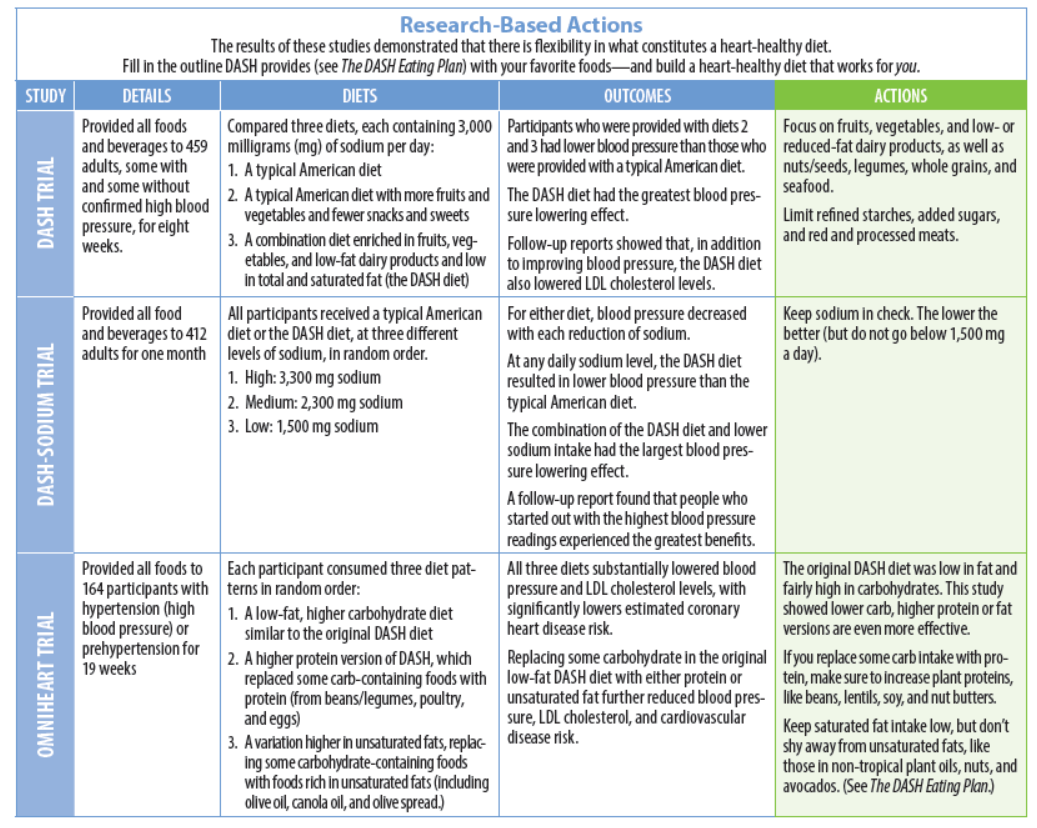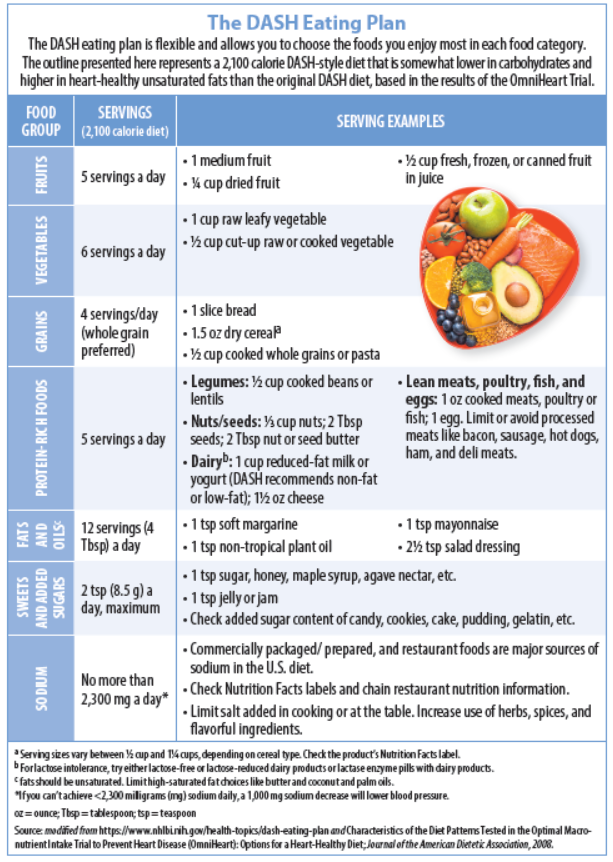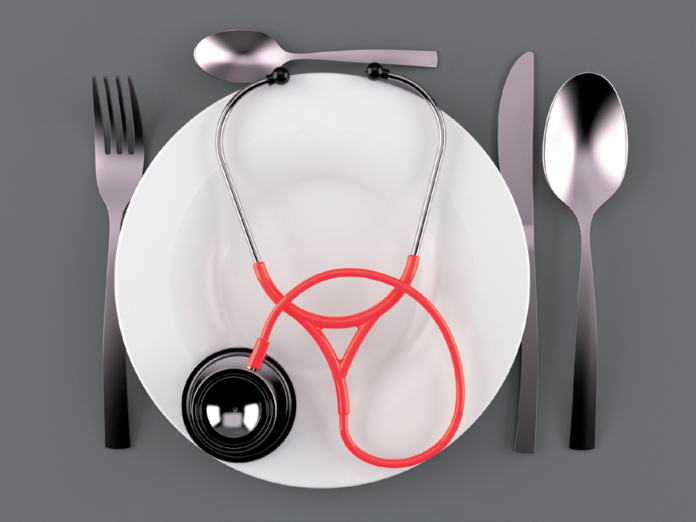Heart disease remains the number one cause of death in the U.S. The DASH eating plan (Dietary Approaches to Stop Hypertension) has been proven to help control two of the major cardiovascular disease risk factors—high blood pressure and high blood levels of LDL cholesterol. Whether you want to reverse high blood pressure and high LDL cholesterol, or prevent them, this article will provide the information you need to get started.
The Basics. The DASH diet requires no special foods or calorie counting. Instead, it provides general daily and weekly intake goals to ensure you get plenty of foods rich in certain beneficial nutrients (for instance, potassium, calcium, magnesium, fiber, and protein) and not a lot of saturated fat, sodium, or added sugars. (See The DASH Eating Plan for more information.) It is easy to tailor the specific foods you choose to your personal preferences and lifestyle.
The basic DASH diet is higher than the typical American diet in fruits, vegetables and low-fat dairy products and lower in total fat, saturated fat, and dietary cholesterol. Variations on this diet that are lower in sodium, replace some carbohydrates with (largely plant) protein, or replace some carbs with unsaturated fats have proven to be at least as effective, and often more so. The results of several landmark studies suggest specific actions we can take to follow a DASH-style diet proven to reduce risk for cardiovascular disease by lowering blood pressure and LDL cholesterol levels. See Research-Based Actions for the details of these studies, and what they mean for you.


























